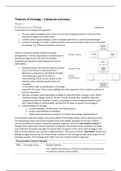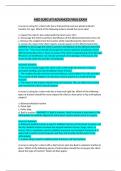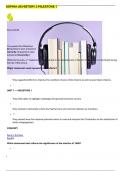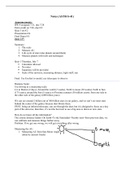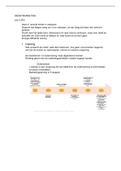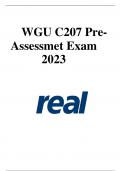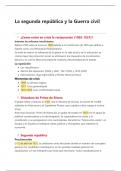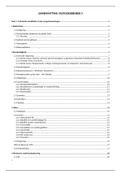Samenvatting
Literature summary - Theories of Strategy
- Vak
- Instelling
This document contains a summary for the articles required for 'Theories of Strategy' taught in semester 1 of the academic year. Please note: the final article, required for meeting 6.2, is missing. Other than that the summary contains all articles.
[Meer zien]
